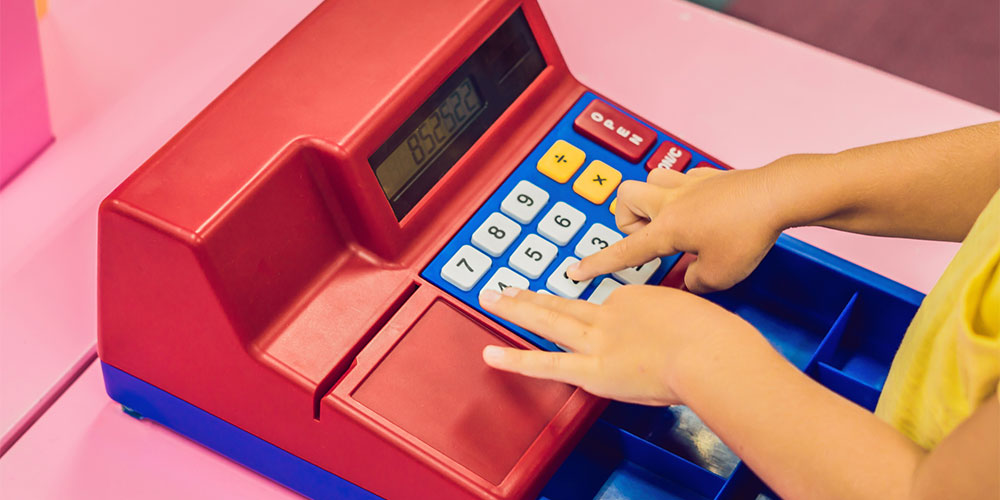OK, it’s time to make a confession.
Our teachers back in the day told us a lie. Not on purpose, of course. But those non-clairvoyant educators fibbed about everyone not having access to a calculator at all times. But, if anything, the omnipresence of smartphones brings even more relevancy to the teaching of real-world math.
Real-world math. That’s an important adjective.
When students understand how the subject applies to their lives, they’re far more likely to engage with and retain the material. So, with that in mind, we’ve collected some classroom activities for real-world math that we hope will make STEM instruction a little more seamless.
Grocery Store Fun
Don’t let the simplicity fool you — this fun and engaging activity promotes teamwork, improves communication, and fosters imagination. In a makeshift grocery store activity, students pick up items and determine how much their order would cost. The activity involves teamwork and communication, and gives kids a small taste of adulthood.
Perfect for elementary students, this real-world math classroom activity involves little financial investment. In other words, if you don’t have access to toy groceries, place price stickers on various items around the classroom. (This solution offers an affordable, paper-based option that includes food, a grocery list, money, cash registers, etc.)
After you designate cashiers and customers and pair up teams, have your kids select a set number of items and then calculate the cost. Depending on their skill level, you can factor in sales tax, discounts, and budget limitations.
Budgeting and Life Skills
Think of this one as a version of the grocery store play-to-learn activity we described above. Only this time, older kids get a taste of what it’s like to be on their own. Specifically, we’re speaking of adulthood in terms of needing to buy things and having a set amount of money with which to acquire said things. (Hey, no one said being a grown-up was easy or fun all the time, even if you don’t have a curfew.)
Yes, youngsters will learn to budget and make strategic choices about their consumption, but they’ll acquire some good SEL skills as well. That is, they’ll discover that maybe the freedom of adulthood is not only about the perks of voting rights and late-night Netflix binges.
You can spin this any way you want, but in general, teachers give their students a proposed paycheck, a rent or mortgage cost, a list of bills with set dollar amounts, a grocery brochure, and a list of entertainment options like dining out and movie theater visits. Those last two are the only malleable elements; everything else is immovable. Ask them to choose what to purchase with an eye toward saving a little bit each month.
They’ll learn budgeting and life skills while they improve their math and critical thinking acumen. And if that doesn’t earn you the Teacher of the Year title, then the game is rigged.
Architecture and Structural Integrity
This one is adaptable for elementary, middle, and high school students. In a nutshell, you ask individuals or teams to build a structure that stands on its own. You might use building blocks for younger kids, a set of bridge-building kits for middle schoolers, or a Staxis game for older students.
In terms of specific skill sets, architecture requires deftness in geometry, trigonometry, physics, and calculus. But even if your class is not ready for such advanced concepts, they still must apply critical thinking as they consider the role of weight, height limitations, and the scarcity of materials.
Looking for a fun addition to this activity? Ask students to test their building’s structural integrity using a specific item or method to try to knock it down. I mean, what kid doesn’t want to get permission to chuck paper wads or Styrofoam balls in the classroom?
Inflation and Economics
We shudder to think about what even the most necessary goods and services cost now, much less decades into the future. Sending your students to discover what a common item cost 100 years ago might prove even more jarring. This lesson plan allows your students to learn about the costs of common items as they were listed a century ago. This includes food, clothing, housing, health care, and higher education.
This framework enables your students to calculate increased percentages and speculate how trends will impact future goods. To this end, you can ask them to consider how much the average pay rate has increased, and what amounts the average household would have to generate to keep up with rising prices. If nothing else, you’ve doubled up on math and economics.courses are offered for both graduate and continuing education credit for your salary advancement or recertification needs.







